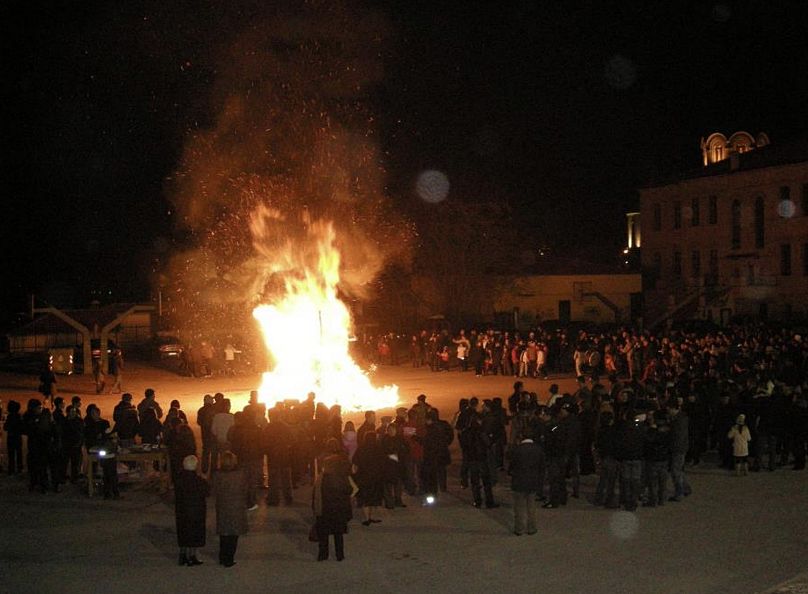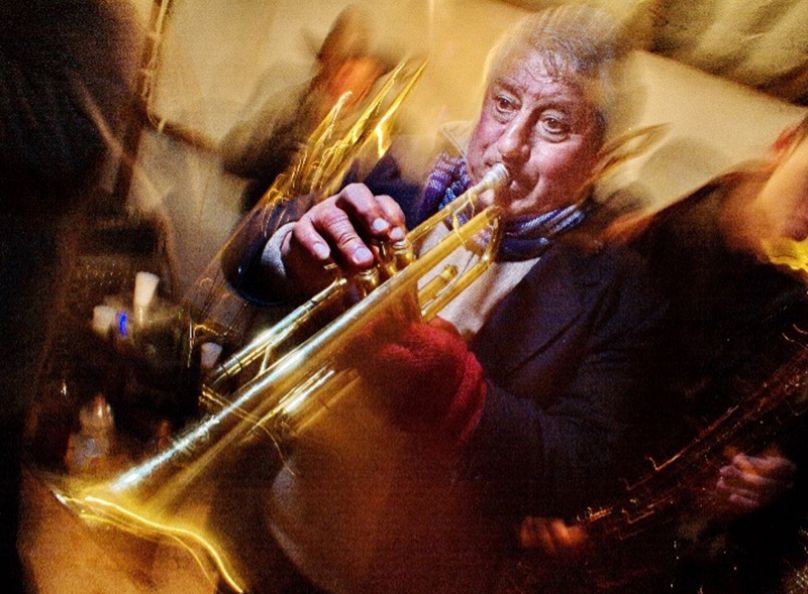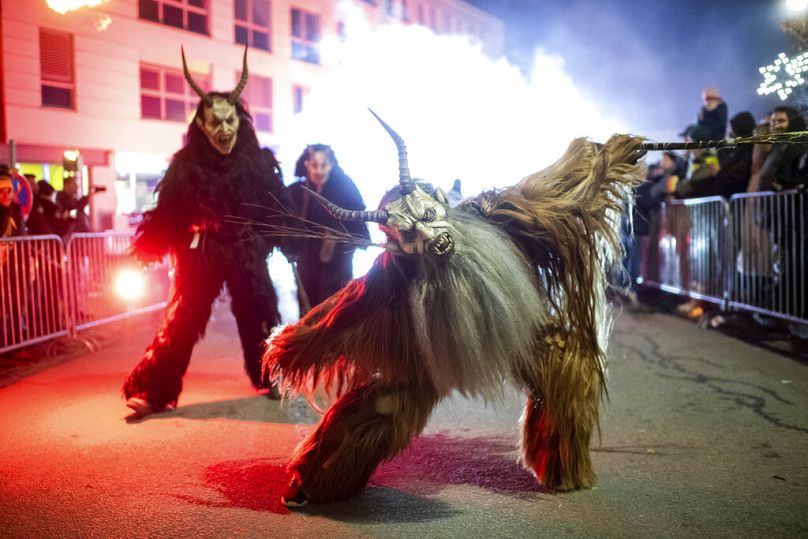Current winter solstice festivities are multilayered events with deep pagan, Christian and modern consumer layers that few people are aware of, Dr Ioannis Pitas writes.
We all know Santa Claus and enjoy his presents. However, who knows his origins and his relationship with Saint Nicholas of Myra?
Why is Christmas celebrated so close to the winter solstice? What is in common between Yule bonfires in Scandinavia, the Krampus monsters of Austria, Boubousiaria carnivals in Greece's Western Macedonia, and India's Lohri fires?
Winter solstice celebrations are very old and cover a wide arc of countries, from Scotland and Scandinavia to Southeastern Europe, Iran and India festivities. In Orthodox countries such as Greece, the core festivities or Dodecameron last for twelve days, from Christmas Eve on 24 December until Epiphany on 6 January.
It coincides with the 21 December winter solstice — the shortest day of the year that caused awe to our distant ancestors. They tried to appease the Sun God with festivals, and by enjoying the abundant stored foods and spirits.
Bonfires play a big role in winter solstice and Dodecameron celebrations: they both warm and exorcise the sun, which first sets and then rises again. Zoomorphic carnivals are at their best and merry songs are heard everywhere.
The link between bonfires, carols and sun gods
Since antiquity, January was the month of weddings in Ancient Greece. The Romans had a plethora of their own festivals: Brumalia (24 November-17 December), Saturnalia/Kronia (18-24 December), Sol Invictus or Invincible Sun (25 December), Kalends (1 January), Vota (3 January), and Lorentalia (4 January).
They bequeathed us Calendae, namely caroling on Christmas Eve or New Year's Eve. Originally, such carols were merry songs that were sung in exchange for gifts and drinks, such as on New Year’s Day.
On the occasion of these festivals, Romans decorated their temples every December. Vikings and Saxons decorated trees and considered them symbols of life.
Many ancient sun-related gods or demigods were "born" on the winter solstice: Dionysus, Hermes, and Hercules of Greece, Egypt's Horus, Zarathustra, Mithras in Persia, India's Krishna, Buddha in Nepal, Adonis of Phoenicia, and Tammuz (Babylon).
It is a natural choice that, already in the middle of the 4th century AD, the then-united Christian Church set Christmas on 25 December, exactly on the feast of the Invincible Sun.
Eastern Romans, or Byzantines, gave a new Christian mantle to the old pagan customs. The bonfires of the winter solstice were renamed the fires of the shepherds who attended the birth of Jesus.
New Christian carols were created or the old ones were supplemented with Christian elements, and the Dodecameron came into its present form. All Dodecameron festivities were condemned by the Christian Church, yet they endured.
Satirical libertines, colourful costumes and lyra music
Today, Dodecameron is celebrated at its best in Greece's Western Macedonia, where festivities survived intact, due to its geographical isolation.
The festive atmosphere begins on St Nicholas Day (6 December) and continues unabated beyond Dodecameron and well into Lent carnivals.
Christmas bonfires are lit in Siatista, Florina on 23 December. Various colourful carnivals are alive and well and come to bloom in early January: Boubousaria in Siatista, Eratyra, and Ragoutsaria (perhaps coming from the Roman rogatores or beggars) in Kastoria.
Their satirical character can sometimes become too libertine.
Bell-bearer carnivals occur on Epiphany Day (5 January) in Eastern Macedonia. They showcase impressive costumes and have some similarities with Surva carnivals in Bulgaria and the country of North Macedonia.
Throughout Dodecameron, Pontic Greeks celebrate Momogeri carnivals with colourful costumes and lyra music all over Western Macedonia.
From Scotland to India and back to the beloved Santa
Winter solstice and Dodecameron festivities are spread over an arc starting in Scotland and Scandinavia in the north, passing through Central Europe and the Balkans and, via Iran, ending in Northern India.
Everything revolves around similar themes: outdoor bonfires, bell-bearing and zoomorphic carnivals or disguises of the opposite sex.
Big logs are put in the fireplace — koliantas, yulelog, butuculcrăciunului. Western European celebrations have borrowed many elements from the Scandinavian Yule celebrations, as well as from German folklore. Slavs celebrate the pre-Christian Koleda.
India has three related festivals: Diwali festival (mid-September to mid-November), Lohri fires (January), and Holi fires (late February to mid-March). This geographical dispersion and thematic affinity indicate that these customs are ancient and possibly paleo-Indo-European.
Christian customs have also undergone several transformations. St Nicholas Day (St Mikuláš day, St Nicholasday) is one of the few saints’ feasts that, to this day, are celebrated on the same date (6 December) by almost all Christian denominations.
In Orthodox countries, this feast marks the beginning of the festive season. In the West, St Nicholas became a benevolent old man, who gives gifts to children. Sinterklaas, and his assistant Zwarte Piet do the same in the Netherlands.
In 1931, Coca-Cola launched — with great success — Santa Claus (a corruption of Sankt Nikolaus), the kindly old man who distributes its soft drinks and all sorts of presents at Christmas.
In Greece, Santa Claus was blended with Saint Basil or Ai Vasilis, a venerable Orthodox saint celebrated on the 1 January.
A plethora of layers few are aware of
Amazingly, centuries-old Dodecameron traditions survived intact, despite strong opposition by religion.
As a result, current winter solstice festivities are multilayered events, with deep pagan, Christian and modern consumer layers, that few people are aware of.
Another really striking cultural phenomenon is the rapid customs transfiguration that still happens in our times, almost within the confines of a single human generation.
In the end, the many surviving celebrations are proof-positive the depth of our customs and help us enjoy them even more during the festive period.
Dr Ioannis Pitas is a professor at the Aristotle University of Thessaloniki – AUTH.
At Euronews, we believe all views matter. Contact us at view@euronews.com to send pitches or submissions and be part of the conversation.














